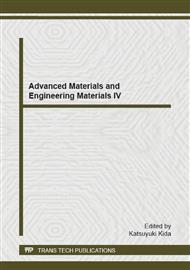p.491
p.495
p.501
p.505
p.511
p.517
p.521
p.525
p.529
Utilization of Waste Materials from Industrial Processes of a Brazilian Sugarcane Mill for Energy Production
Abstract:
This work presents the thermodynamic, thermoeconomic, and economic analyses of utilization of waste materials from industrial processes of a modern Brazilian sugarcane mill (bagasse, straw and vinasse) for energy production. The first case considers a conventional steam thermal power plant constituted, among other equipment, by a steam boiler of high-pressure and high-temperature and by an extraction-condensation steam turbine, being all mechanical driving electrified, and using just bagasse as fuel. The second case considers a modified steam thermal power plant in which is incorporated systems to be possible the utilization of straw and vinasse as complementary fuel to bagasse by means of a combined cycle, with the addition of a gas turbine and a heat recovery steam generator, among other equipment.
Info:
Periodical:
Pages:
511-516
Citation:
Online since:
December 2014
Keywords:
Price:
Сopyright:
© 2015 Trans Tech Publications Ltd. All Rights Reserved
Share:
Citation:


